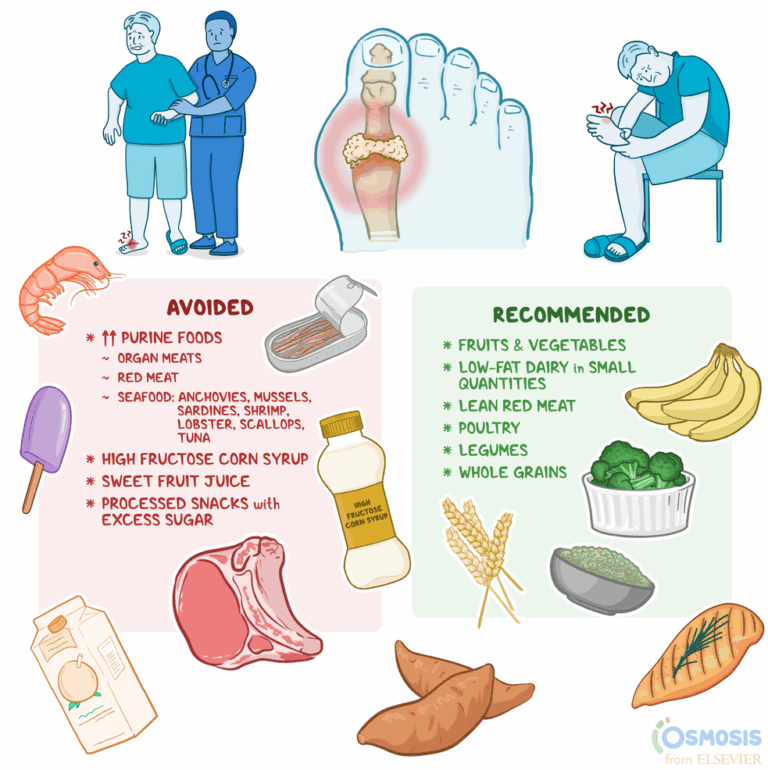The Unseen Interference: Zinc’s Surprising Impact on HIV, Chemo, and Arthritis Drugs
The story of medicine is often told through grand narratives: the discovery of penicillin, the eradication of smallpox, the triumph of targeted therapies against cancer. Yet, beneath these towering achievements, a quieter, more intricate drama unfolds—a drama involving the most fundamental building blocks of life. It’s a narrative shaped not by heroic surgeons or revolutionary chemists alone, but by the subtle, ubiquitous forces that underpin our very biology. Among these, the trace element zinc, long celebrated as an essential nutrient, has begun to reveal a surprising, multifaceted role: an unseen hand capable of profound interference, both beneficial and detrimental, in the efficacy and toxicity of some of our most critical drugs for HIV, cancer, and autoimmune arthritis.
For decades, zinc existed largely in the periphery of medical research, acknowledged for its indispensable roles in growth, immunity, and enzymatic function, yet rarely considered a central player in the complex pharmacology of advanced therapeutics. It was seen as a workhorse, not a maestro. But as our understanding of molecular biology deepened, and the precision of drug action became paramount, researchers began to glimpse zinc’s true nature: a dynamic, reactive ion whose interactions with drugs and biological systems are far more intricate and impactful than previously imagined. This is the story of that unfolding realization, a journey from underestimation to profound recognition, revealing how a tiny metal can cast a long shadow over the landscape of modern medicine.
Zinc: The Essential Enigma – A Prelude to Interference
To truly appreciate zinc’s surprising interference, one must first understand its inherent duality. Zinc is not merely a component; it is an active participant in an astonishing array of biological processes. Over 300 enzymes rely on zinc as a catalytic cofactor, orchestrating reactions from DNA synthesis and repair to protein metabolism and antioxidant defense. It stabilizes protein structures, forms the iconic "zinc finger" motifs crucial for gene expression, and plays a pivotal role in modulating immune responses, nerve function, and hormone signaling. Without zinc, life as we know it would cease.
Yet, this very essentiality harbors a potential for disruption. Optimal zinc homeostasis is a tightly regulated ballet; both deficiency and excess can wreak havoc. A lack of zinc can compromise immune function, impair wound healing, and stunt growth. Conversely, an overabundance can induce oxidative stress, interfere with the absorption of other essential minerals like copper, and provoke cellular toxicity. This narrow therapeutic window, coupled with its ubiquitous presence and reactivity, sets the stage for zinc’s complex interactions with pharmaceutical agents.
Historically, zinc’s journey into the medical spotlight began in the early 20th century, recognized first in plants, then animals, and finally humans as an essential micronutrient. Early research focused on deficiency states and the benefits of supplementation. However, as molecular biology advanced in the latter half of the century, the focus shifted from gross physiological effects to the atomic level, exploring how zinc ions interact with biomolecules. It was here, in the intricate dance between metal ion and protein, between nutrient and drug, that the seeds of the "unseen interference" began to germinate. Researchers started to ponder: if zinc is so integral to fundamental cellular processes, what happens when powerful drugs, designed to precisely alter these processes, encounter this reactive, ever-present element? The answers, as we shall see, were nothing short of surprising.
Chapter 1: The Viral Chess Match – Zinc and HIV Therapeutics
The fight against Human Immunodeficiency Virus (HIV) represents one of medicine’s most significant triumphs, transforming a death sentence into a manageable chronic condition. Antiretroviral Therapy (ART), a cocktail of drugs targeting various stages of the viral life cycle, has revolutionized patient outcomes. However, ART is not without its challenges: lifelong adherence, potential side effects, and the looming threat of drug resistance. Within this complex therapeutic landscape, zinc has emerged as an unexpected, yet critical, player, adding layers of nuance to treatment strategies.
The initial understanding of zinc’s role in HIV was largely centered on deficiency. HIV infection itself often leads to malabsorption, chronic inflammation, and increased metabolic demands, resulting in widespread zinc deficiency among patients. This deficiency was correlated with faster disease progression, impaired immune function (particularly T-cell activity), increased opportunistic infections, and a general decline in quality of life. Logic dictated that zinc supplementation would be universally beneficial, a simple remedy for a clear problem.
However, as research progressed, the narrative grew more complicated. Scientists observed that HIV, a cunning and adaptable pathogen, also exploits host cellular machinery, including zinc-dependent processes, for its own replication. The virus itself contains "zinc finger" motifs within crucial proteins like Gag, Tat, and Rev. These zinc finger domains are essential for viral assembly, gene expression, and the export of viral RNA from the nucleus to the cytoplasm – vital steps in the HIV life cycle. This revelation introduced a profound paradox: while zinc deficiency harmed the host, could excess zinc, or even optimal zinc levels, inadvertently support viral replication by providing the necessary cofactor for these viral zinc fingers?
This molecular dance directly impacts ART. Consider the integrase inhibitors (e.g., raltegravir, dolutegravir), a cornerstone of modern ART. These drugs work by binding to the active site of the HIV integrase enzyme, which is responsible for inserting the viral DNA into the host genome. The active site of integrase often contains metal ions, including magnesium, which are crucial for its catalytic function. Zinc, with its similar chemical properties, can compete with or displace these essential metal ions, potentially altering the enzyme’s conformation or catalytic efficiency. While some studies suggest zinc might inhibit integrase activity in vitro, its interaction in the complex cellular environment, and particularly in the presence of integrase inhibitors, is far from straightforward. Zinc could potentially chelate with the drug itself, forming a complex that reduces the drug’s bioavailability or alters its affinity for the integrase enzyme, thereby diminishing its therapeutic effect.
Furthermore, zinc interacts with cellular enzymes involved in drug metabolism, notably the cytochrome P450 (CYP450) system. Many ART drugs are metabolized by CYP450 enzymes. Changes in zinc status, or direct zinc-drug interactions, could modulate the activity of these enzymes, altering the pharmacokinetics of antiretrovirals. This could lead to suboptimal drug levels, increasing the risk of viral resistance, or supra-therapeutic levels, exacerbating side effects.
The clinical implications are profound and unresolved. Should HIV patients be universally supplemented with zinc? For those with clear deficiency and associated symptoms, the answer remains generally yes, but with caution. For patients with adequate zinc levels, or those on specific ART regimens, the risks and benefits become a finely balanced act. The "unseen interference" here is a double-edged sword: insufficient zinc weakens the host, while potentially excessive zinc might, in certain contexts, inadvertently aid the virus or interfere with drug action. This complexity underscores the urgent need for personalized medicine approaches, where a patient’s zinc status, dietary intake, and specific ART regimen are all considered in a holistic management plan, moving beyond simplistic supplementation recommendations. The viral chess match, it turns out, involves not just the virus and the drug, but also the subtle moves of an essential metal ion.
Chapter 2: The Battleground Within – Zinc and Cancer Chemotherapy
Cancer chemotherapy, a relentless assault on rapidly dividing cells, is a testament to both the ingenuity and the brutality of modern medicine. While life-saving, its effectiveness is often tempered by severe side effects and the pervasive challenge of drug resistance. In this high-stakes battleground, zinc once again emerges as an unexpected protagonist, its influence shaping the cellular response to chemotherapeutic agents in ways that can be both perplexing and critical.
Zinc’s role in cancer is inherently contradictory, reflecting its dual nature in cellular proliferation and apoptosis. In some contexts, high intracellular zinc levels have been linked to promoting cell growth, angiogenesis, and tumor progression, particularly in prostate and breast cancers. This pro-tumorigenic effect is often mediated by dysregulation of zinc transporters (ZnTs and ZIPs), which control the influx and efflux of zinc across cellular membranes, leading to altered intracellular zinc homeostasis in cancer cells compared to healthy cells. Conversely, in other scenarios, carefully controlled zinc levels can induce apoptosis (programmed cell death), inhibit metastasis, and sensitize cancer cells to therapeutic agents, positioning zinc as a potential anti-cancer agent or chemosensitizer. This paradox makes its interactions with chemotherapy drugs particularly complex.
The "unseen interference" of zinc with chemotherapy drugs manifests through several key mechanisms. Consider platinum-based drugs like cisplatin, carboplatin, and oxaliplatin – cornerstones in the treatment of various solid tumors. These drugs exert their cytotoxic effects primarily by forming DNA adducts, leading to DNA damage and apoptosis. However, they are also notorious for severe side effects, including nephrotoxicity, neurotoxicity, and ototoxicity. Zinc can interact with platinum drugs in multiple ways. Firstly, zinc can directly chelate with platinum compounds, potentially forming insoluble complexes that reduce the drug’s bioavailability and thus its anti-cancer efficacy. This chelation can occur in the bloodstream or within the cell, effectively sequestering the active drug before it reaches its DNA target.
Secondly, zinc plays a critical role in cellular detoxification and antioxidant defense mechanisms, often mediated by metallothioneins. Metallothioneins are small, cysteine-rich proteins that avidly bind heavy metals, including zinc and platinum. Overexpression of metallothioneins in cancer cells, often induced by zinc, can sequester platinum drugs, preventing them from binding to DNA and contributing to drug resistance. Conversely, some studies suggest that zinc could potentially mitigate certain chemotherapy-induced toxicities, such as mucositis or neuropathy, by modulating oxidative stress or inflammatory pathways. This adds another layer of complexity: could zinc be protective for healthy cells while hindering the drug’s effect on cancer cells?
Beyond platinum drugs, zinc’s influence extends to other classes of chemotherapeutics. Methotrexate, an antimetabolite, works by inhibiting dihydrofolate reductase, an enzyme crucial for folate metabolism and DNA synthesis. Zinc is a cofactor for several enzymes involved in folate metabolism and DNA repair. Altered zinc levels could theoretically modulate the efficacy of methotrexate or influence the balance of folate pathways, impacting both its anti-cancer activity and its systemic toxicity. Similarly, topoisomerase inhibitors, which target enzymes responsible for DNA unwinding and replication, could be affected by zinc, given its broad role in maintaining genomic integrity and DNA repair processes.
The oncological conundrum then becomes: how do we leverage zinc’s potential anti-cancer properties or its ability to mitigate side effects, without inadvertently promoting tumor growth or reducing the efficacy of life-saving chemotherapy? The answer lies in precision. Understanding the specific zinc transporters expressed by a particular tumor, the intracellular zinc pools, and the exact pharmacokinetic interactions between zinc and individual chemotherapy agents is paramount. The "unseen interference" here demands a shift from broad assumptions to targeted, personalized interventions, where zinc status is not just a nutritional footnote but a critical variable in the complex equation of cancer treatment.
Chapter 3: Calming the Storm – Zinc and Arthritis Drug Therapies
Autoimmune diseases like Rheumatoid Arthritis (RA) and Psoriatic Arthritis (PsA) are characterized by chronic inflammation, immune dysregulation, and progressive joint damage. The mainstay of treatment involves Disease-Modifying Antirheumatic Drugs (DMARDs), ranging from conventional synthetics like methotrexate and hydroxychloroquine to advanced biologics that target specific inflammatory cytokines. In this landscape of chronic immune overactivity, zinc, with its profound immune-modulatory and anti-inflammatory properties, presents another fascinating case of "unseen interference," offering both therapeutic promise and potential pitfalls.
Zinc’s role in immune function is well-established. It is essential for the development and function of both innate and adaptive immune cells. Zinc deficiency, commonly observed in patients with chronic inflammatory diseases, is known to impair T-cell function, reduce antibody production, and increase susceptibility to infections – issues already prevalent in autoimmune patients. Conversely, adequate zinc levels are crucial for maintaining immune balance, suppressing excessive inflammation, and promoting the resolution of immune responses. Zinc acts as an anti-inflammatory agent by modulating the production of key cytokines (e.g., reducing pro-inflammatory TNF-alpha and IL-6 while potentially enhancing anti-inflammatory IL-10) and by regulating signaling pathways like NF-κB, a central mediator of inflammation. Its antioxidant properties also help combat oxidative stress, a significant contributor to joint damage in arthritis.
Given this background, one might assume that zinc supplementation would be universally beneficial for arthritis patients, potentially enhancing the effects of DMARDs or reducing their side effects. However, the interactions are more nuanced.
Consider methotrexate, a cornerstone DMARD for RA. As discussed in the context of cancer, methotrexate inhibits dihydrofolate reductase, disrupting folate metabolism. Zinc is a cofactor for several enzymes involved in folate metabolism and DNA synthesis. In patients taking methotrexate, changes in zinc status could theoretically influence the drug’s efficacy or toxicity. While zinc deficiency could exacerbate some of the side effects of methotrexate (e.g., gastrointestinal issues), excess zinc could, in specific contexts, interfere with its precise mechanism of action by modulating related enzymatic pathways, or by forming complexes that alter its bioavailability. The exact interplay remains an area of active research, but the potential for "unseen interference" is clear.
Similarly, hydroxychloroquine, another common DMARD, functions as an immunomodulator and anti-malarial drug. While its precise mechanism in autoimmune disease is complex, it involves altering lysosomal function and inhibiting antigen presentation. Zinc’s broad influence on immune cell signaling and lysosomal stability means that optimal zinc homeostasis could be crucial for hydroxychloroquine to exert its full therapeutic effect, or conversely, dysregulated zinc levels could subtly undermine its action.
The most intriguing interactions might be with biologics, such as TNF-alpha inhibitors (e.g., adalimumab, etanercept). These drugs precisely target specific inflammatory cytokines, dramatically reducing inflammation. Could zinc, with its own anti-inflammatory properties, act synergistically with biologics, potentially allowing for lower biologic doses or enhancing patient response rates? Or could an oversupply of zinc, by broadly influencing immune pathways, somehow interfere with the highly specific targeting of biologics, creating an unexpected antagonism? For instance, some studies suggest that zinc can modulate the production of matrix metalloproteinases (MMPs), enzymes involved in cartilage degradation in arthritis. While biologics aim to reduce inflammation that drives MMP activity, zinc’s independent influence on MMPs could either complement or complicate the therapeutic strategy.
The therapeutic potential of zinc in arthritis lies in its judicious use as an adjunctive therapy, carefully titrated to optimize outcomes. The "unseen interference" here is less about direct drug binding and more about the intricate modulation of shared biological pathways: inflammation, immune cell function, and oxidative stress. Understanding how zinc status interacts with the specific mechanisms of action of different DMARDs and biologics could pave the way for more personalized treatment regimens, where zinc is not just a general supplement but a precisely managed variable, helping to calm the storm of autoimmune disease while minimizing therapeutic compromises.
The Unseen Hand: Mechanistic Insights and Shared Themes
The recurring narrative across HIV, cancer, and arthritis therapeutics underscores a profound truth: zinc is not a passive bystander. Its "unseen interference" is driven by a set of shared mechanistic principles that transcend disease categories, revealing the fundamental ways this essential element interacts with our biology and our medicines.
-
Chelation Chemistry: This is perhaps the most direct form of interference. Zinc, a reactive divalent cation, readily forms coordination complexes with various ligands. Many drugs, especially those with nitrogen, oxygen, or sulfur donor atoms, possess structural features that allow them to chelate with zinc. This chelation can occur in the gastrointestinal tract, affecting drug absorption; in the bloodstream, altering drug distribution and protein binding; or within cells, sequestering the drug away from its intended target or altering its chemical stability. The consequences range from reduced drug bioavailability and efficacy to altered pharmacokinetic profiles and unexpected toxicity.
-
Enzyme Modulation: Zinc is a prolific enzymatic cofactor, influencing the activity of hundreds of enzymes. This means zinc can directly or indirectly modulate enzymes involved in drug metabolism (e.g., cytochrome P450 enzymes), drug efflux pumps, or enzymes critical to disease pathology (e.g., viral enzymes, cancer cell proliferation pathways, inflammatory mediators). By altering the activity of these enzymes, zinc can change the rate at which drugs are broken down, transported, or exert their therapeutic effect, leading to unpredictable outcomes.
-
Oxidative Stress and Inflammation: These are common denominators across all three disease areas. HIV infection is characterized by chronic oxidative stress and inflammation. Chemotherapy often generates reactive oxygen species, exacerbating oxidative damage. Autoimmune arthritis is fundamentally a disease of chronic inflammation and oxidative imbalance. Zinc plays a crucial role in maintaining redox homeostasis through its antioxidant properties and its regulation of enzymes like superoxide dismutase. By modulating oxidative stress and inflammatory pathways (e.g., NF-κB, cytokine production), zinc can indirectly influence disease progression and the therapeutic window of drugs designed to combat these very processes.
-
Immune System Regulation: Zinc is indispensable for both innate and adaptive immunity. Its influence spans lymphocyte development, cytokine production, and the function of immune cells like macrophages and neutrophils. Drugs for HIV, cancer, and arthritis all interact profoundly with the immune system. HIV drugs aim to control viral replication to preserve immune function. Chemotherapy can be profoundly immunosuppressive. Arthritis drugs are designed to rebalance an overactive or misdirected immune response. Zinc’s subtle modulation of immune pathways can therefore amplify, diminish, or alter the desired immunological effects of these drugs, sometimes with unforeseen consequences.
-
Gene Expression and Zinc Finger Proteins: Zinc finger proteins are a vast class of transcription factors that regulate gene expression. By binding to specific DNA sequences, they control the synthesis of proteins critical for cell growth, differentiation, and survival. Drugs that target DNA or transcription (e.g., some chemotherapy agents, or drugs that influence viral gene expression) could be subtly influenced by zinc availability, which directly impacts the function of these zinc finger proteins. This can alter the expression of drug targets, drug metabolizing enzymes, or proteins involved in disease pathology.
-
Zinc Transporters (ZnTs and ZIPs): The cellular concentration of zinc is meticulously regulated by a family of zinc transporters. Dysregulation of these transporters is increasingly recognized in various diseases, including cancer and neurological disorders. Changes in the expression or activity of ZnTs and ZIPs can alter intracellular zinc pools, thereby influencing the local concentration of zinc available for interaction with drugs or for modulating cellular processes relevant to disease. This provides a dynamic layer to zinc’s interference, as its availability within specific cellular compartments can vary significantly.
These shared themes highlight that zinc’s "unseen interference" is not a series of isolated incidents, but rather a pervasive biological phenomenon rooted in its fundamental chemical and biological properties. Recognizing these common mechanisms is the first step towards predicting, understanding, and ultimately harnessing zinc’s power in a therapeutic context.
The Call to Action: Towards Personalized Medicine
The narrative of zinc’s surprising impact is a clarion call for a fundamental shift in how we approach trace elements in medicine. From viewing zinc as a simple nutritional supplement, we must now recognize it as a potent, dynamic modulator of drug action and disease progression. This shift demands a move towards truly personalized medicine, where a patient’s zinc status is integrated into comprehensive treatment strategies, particularly for those battling HIV, cancer, and autoimmune arthritis.
The challenges in achieving this are significant. Accurate measurement of "bioavailable" zinc in different physiological compartments remains difficult. Individual variability, influenced by genetics (e.g., polymorphisms in zinc transporter genes), diet, microbiome composition, and comorbidities, means that a "one-size-fits-all" approach to zinc supplementation or restriction is likely to be ineffective, and potentially harmful. Designing clinical trials that rigorously account for zinc status, dietary intake, and specific drug regimens is complex but essential.
However, the potential rewards are immense. Future directions in research and clinical practice must include:
- Zinc-aware drug development: Designing new drug molecules that minimize adverse interactions with zinc, or conversely, leveraging zinc’s modulatory effects to enhance drug efficacy or reduce toxicity.
- Pharmacogenomics of zinc: Investigating how genetic variations in zinc transporters, metallothioneins, and zinc-dependent enzymes influence drug responses and dictate individual zinc requirements.
- Targeted zinc therapies: Exploring the use of specific zinc chelators or zinc ionophores to precisely manipulate intracellular zinc levels in cancer cells, or using controlled zinc supplementation to optimize immune responses in HIV and arthritis, moving beyond general supplementation.
- Integrated patient management: Developing clinical protocols that routinely assess zinc status in high-risk patients and adjust dietary recommendations or supplementation based on individual needs and concurrent drug therapies. This would involve a collaborative approach between nutritionists, pharmacologists, and treating physicians.
- Advanced diagnostic tools: Developing more sophisticated methods for measuring zinc status beyond total plasma zinc, perhaps by assessing intracellular zinc levels in specific cell types or using functional assays.
The story of zinc in medicine is far from over; indeed, we are just beginning to read its most intricate chapters. The "unseen interference" it exerts is no longer a mere scientific curiosity but a critical factor influencing patient outcomes. By embracing this complexity, by meticulously unraveling the molecular dialogue between zinc and our most powerful drugs, we can move closer to a future where therapies are not just effective, but truly optimized, safer, and profoundly personalized. The subtle power of this ubiquitous metal, once overlooked, now holds the key to unlocking new frontiers in the ongoing quest for human health. The narrative is no longer just about the drugs or the diseases; it is also about the quiet, persistent influence of the essential element, zinc, shaping the very fabric of therapeutic success.






